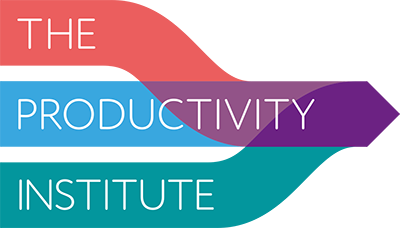A Quantum Leap in Productivity: Preparing for the Future with Quantum Computing
This blog is written by Chander Velu, a Co-Investigator at The Productivity Institute and Professor of Innovation and Economics at partner Cambridge University. His recent paper in Nature on ‘How to introduce quantum computers without slowing economic growth’ with Fathiro H. R. Putra explores the potential impact of quantum computing on growth and productivity.
The emergence of quantum computing is expected to bring about a significant revolution in industry with potential benefits to society. As it approaches commercial feasibility, it is vital to comprehend its potential effects on productivity and growth.
Potential opportunities emerging with the advent of quantum computers
Quantum computers work by being able to both store and analyse information more efficiently compared to conventional digital computers. The advantage of quantum computers over digital computers comes from quantum information processing in which information is encoded in the quantum state of physical systems such as atoms, electrons and photons.
They are capable of processing information simultaneously and efficiently due to the unique properties of qubits. This allows them to excel in optimising and solving combinatorial problems, which are integral to many business and commercial operations. Additionally, they can simulate complex quantum mechanical phenomena that classical computers struggle to handle.
Quantum computing has the potential to revolutionise business and technology with its problem-solving capabilities, ushering in a new era of computational power and innovation. For example, improved simulation of materials could lead to better development of low-carbon technologies, such as catalysts for carbon capture or electrolytes for batteries, to address climate change. Simulating molecules better could also speed up drug development. By improving optimisation, a manufacturing firm could quickly reschedule its operations on the factory floor to better meet changing demand and supply conditions. Similarly, a financial services firm could optimise its securities portfolio to enhance risk management. Finally, the enhancement of machine learning could be applied to various areas where artificial intelligence is being used to find better customer solutions.
Economic impact of quantum computing compared to the digital revolution
We believe that quantum computers will bring enormous economic gains, but they might initially slow productivity growth before the benefits accrue, similar to digital computers.
When digital computers spread in the 1970s and 1980s, rather than delivering efficiencies for a decade, they stalled productivity growth, the value added relative to inputs such as labour. Such a dip is known as the ‘productivity paradox’. It arose because businesses had to invest in new equipment and learn how to programme the devices, as well as work out what to do with them. Firms initially did not invest in other innovations necessary to transform core processes and business models. Only after many sectors had adjusted in the 1990s did productivity growth rise again. We believe quantum computers could face a similar productivity paradox but even more severe.
Potential challenges and obstacles that need to be addressed for commercial viability of quantum computing
Three major challenges need to be addressed in adopting quantum computers:
- First is the high integration costs and low short-term rewards. Businesses may adopt quantum computers initially to solve existing business problems, where improvements are likely to be incremental, whilst the costs of integrating digital computers are likely to be high.
- Second is the difficulty in translating quantum concepts for business managers and engineers. Quantum mechanics that underpin these technologies operate on counterintuitive principles, often unfamiliar to engineers and business managers.
- Third is the cryptographic threat of quantum computers. Quantum computers could unlock information encrypted by conventional computers very quickly, which could render existing cryptography methods obsolete and potentially open to hacking.
Hurdles that businesses, researchers and governments should they be prepared to tackle the future of quantum computing
To overcome the specific hurdles in adopting quantum computers, the first crucial step is demonstrating their practical value in tackling real-world industrial or societal challenges. This means showcasing their capabilities and effectiveness in solving complex problems that are currently difficult or infeasible for classical computers to handle.
These include weather forecasting or enhancing the resilience of the financial system, among others. Second is the need to agree on a common language and build understanding between business managers, engineers, and scientists. The third is to integrate quantum computers and quantum communication technologies into a coordinated network with secure encryption, also known as the quantum internet, enabling new business models through enhanced privacy.
Measures or strategies that could help alleviate the economic burden in adopting quantum computing
- One way to ease the economic strain is for the government to promote private investment towards implementing quantum computing. This could be framed as a mission to tackle significant challenges faced by society and industry. Once the proof of concept is shown, researchers should set out what firms need to do in practice to adopt quantum technologies, including how they may need to change their business models and practices, as well as work with others along their value chains.
- Second, a common semantic and syntactic language for quantum computers must be developed. This could take the form of a quantum unified modelling language, similar to the standardised Unified Modelling Language used for digital computer programming, which could facilitate effective communication, simplify the process of software development, and help shorten development times. Strategies for communicating about quantum computing with the public are also needed to build trust in these new technologies and ensure benefits accrue to all parts of society responsibly.
- The third is to help firms invest in new mathematical approaches or adopt quantum-based communications systems such as quantum key distribution. This would overcome security threats and enable new business models to develop, for example, through improved supply chain flexibility.
Examples of how quantum computing could help industry
The quantum internet holds the potential to enable novel business models, with one compelling example being the use of distributed quantum computers and blind quantum computing. This technology allows for completely confidential computation, potentially enhancing machine learning capabilities while safeguarding proprietary information and erasing shared data post-computation. For instance, blind quantum computing could enable the exchange of data or code between 3D-printing machines in one company’s factory and those in another company’s facility without either entity gaining access to the other’s operational details. This innovation opens the door to establishing and optimising networks of factories owned by different companies to better adapt to fluctuations in product demand. Companies could even offer their unused 3D-printing production capacity to others, fostering efficiency improvements, localised production, and increased supply chain flexibility.




